
- Home
- Electronics
- TV & Video
- TV
- Philips TV

Philips TV Deals & Offers
5 active deals32,709 commentsAll Philips TV discounts and offers overview - May 2024

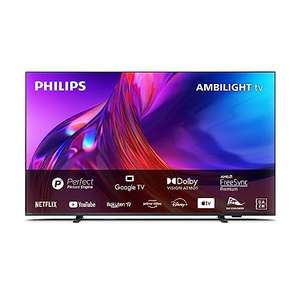
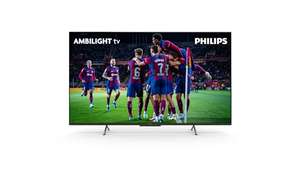
Philips TV price comparisonPowered by
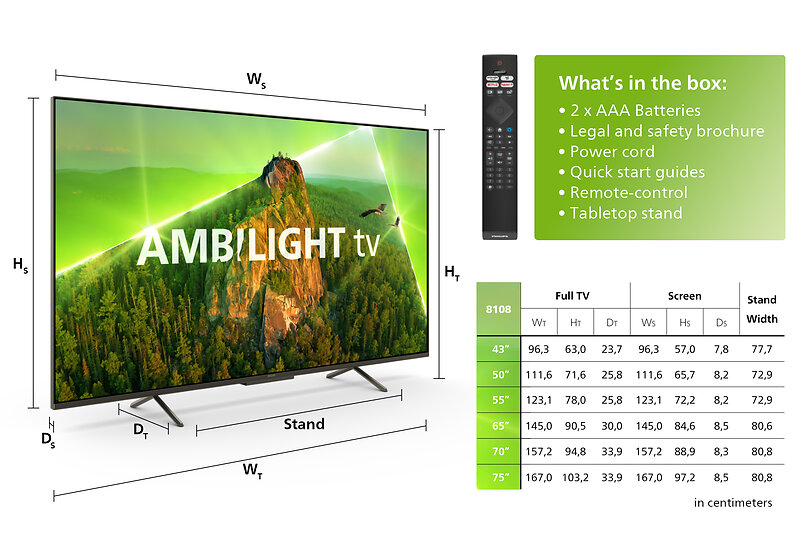 9 offers
9 offers
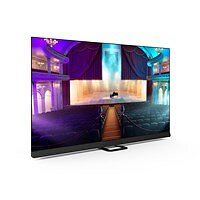 1 offer
1 offer
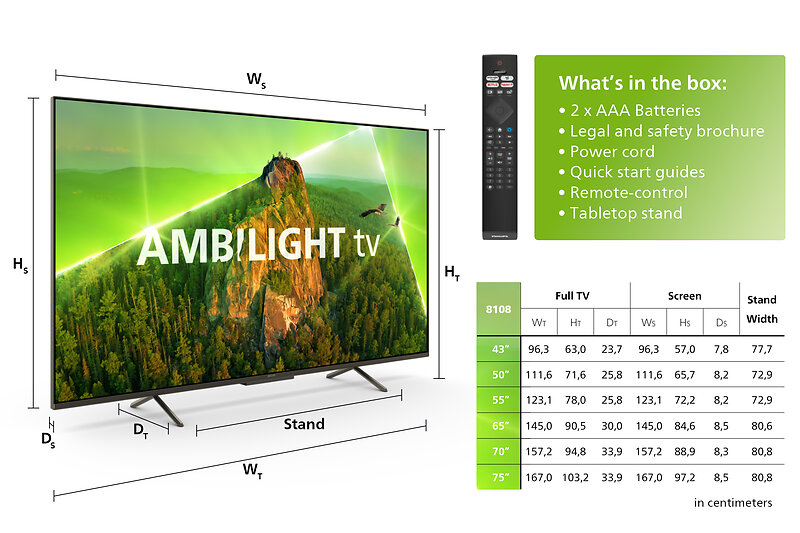 12 offers
12 offers
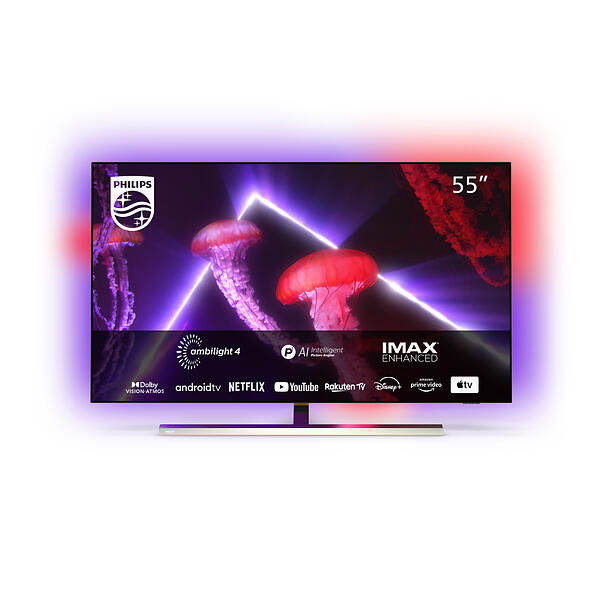 4 offers
4 offers
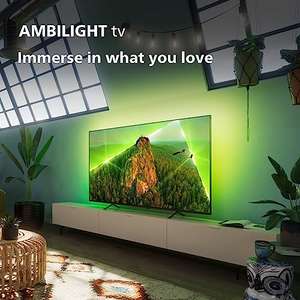

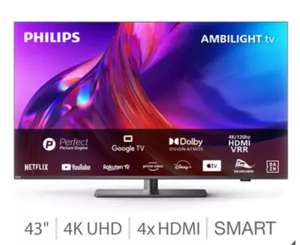
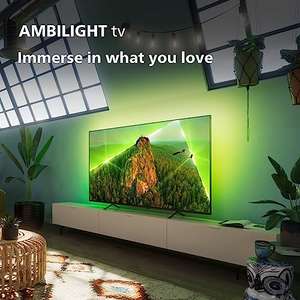
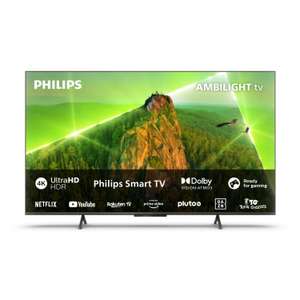
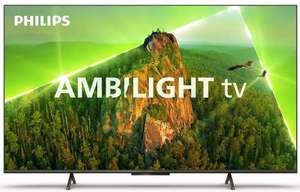
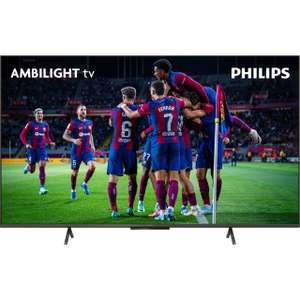

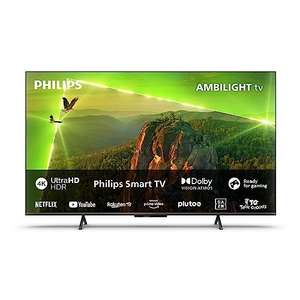
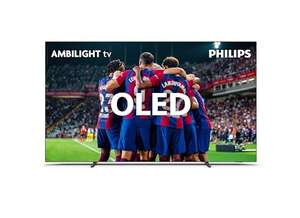
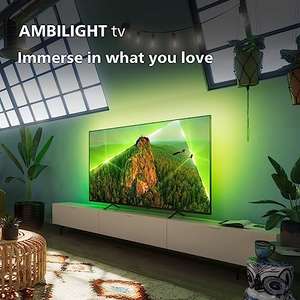
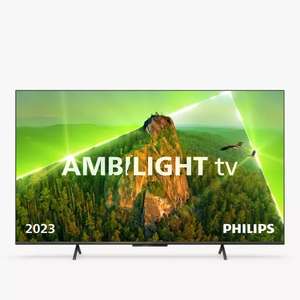

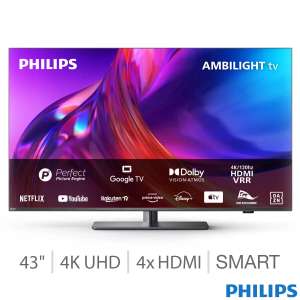
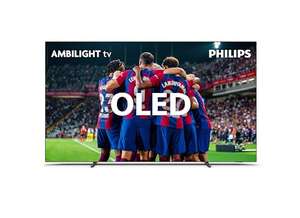
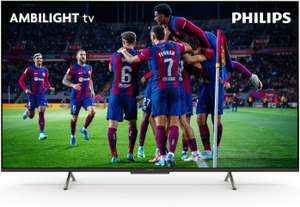
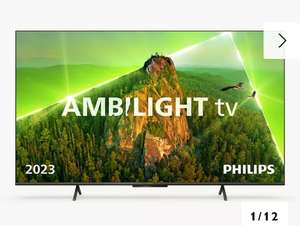
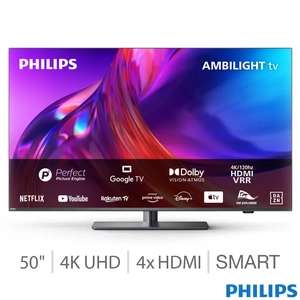
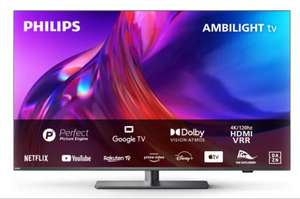
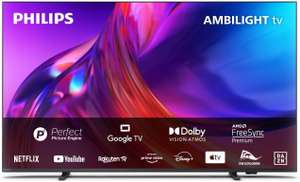
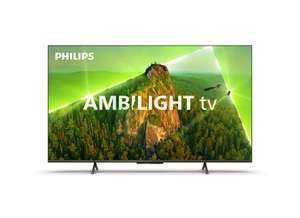
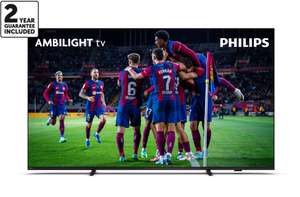

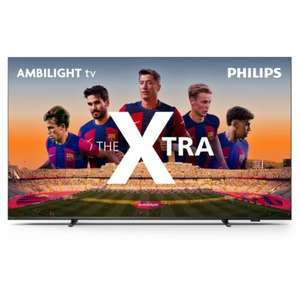
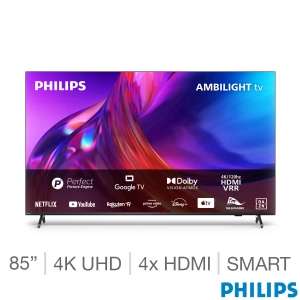
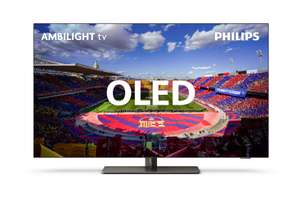
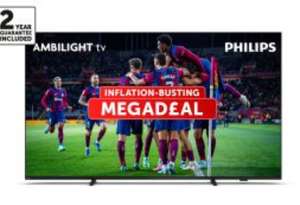
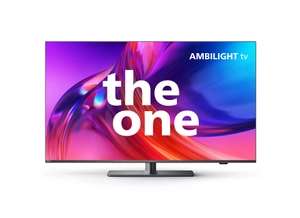
Philips TVs: OLED, 4K and Smart TVs with Ambilight Technology
Dutch company Philips is one of the world's most important TV manufacturers, offering a wide range of OLED and LED flat screens with high resolution, smart technology, industry-leading HDR, and much more. This buyer's guide will introduce the brand and its cutting edge TV technology, and help buyers decide whether a premium Philips TV is what their living room needs.
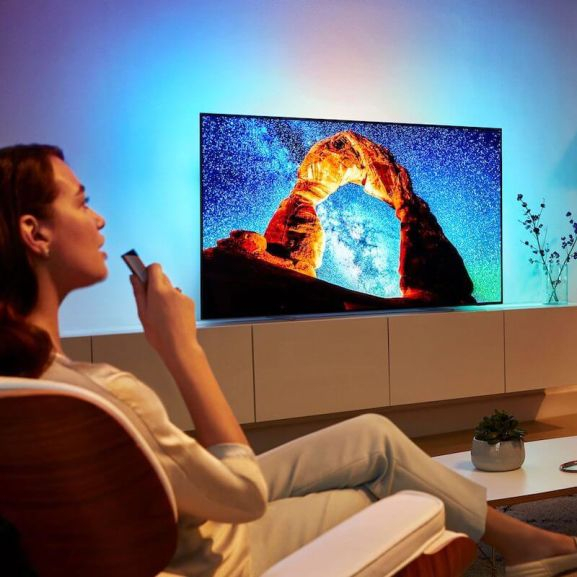
The Rise of a Global TV Giant
Philips has been one of the most prestigious electronics brands for generations, and it looks set to remain so for years to come. Based in the Netherlands, the company is also one of the few remaining European tech giants, employing more than 70,000 people in 100 nations across the globe.
Television lies at the heart of the Philips story. While the company got its start manufacturing light bulbs in the 1890s, its post World War Two success was based around entertainment. From 1949, the company became a worldwide TV manufacturer, building on its hugely popular home radios. By the 60s, it had pioneered home audio cassettes, and during the 70s and 80s, it continued to make inroads into European TV markets.
However, Philips was never dominant. Since the 1960s and 70s, it has had to compete with Korean and Japanese companies, and this has spurred the firm to adopt a pro-active attitude towards innovation. That's why Philips was one of the first TV manufacturers to utilise LED and OLED technology, and why its Ambilight system continues to break new ground. It's also why the Dutch giant has prospered, while other manufacturers have failed. And, as we'll see, that's good news for TV buyers.
What Kind of TVs Does Philips Offer?
Philips keeps its product range simple, with only two major types of televisions for buyers to choose from. Here are the broad categories you'll encounter at the company's hotukdeals listings:
Philips OLED TVs – At the top of its product catalogue, Philips offers a range of high-spec OLED TVs. Now in its 9th series, the company's OLED sets offer rich colours and ultra-high 4K resolution via films of Organic Light Emitting Diodes. They tend to deliver darker blacks, which is vital for establishing crisp contrast, while thanks to the way they work, they are usually thinner than LED/LCD versions. Premium options in the Philips range include the Series 8 and 9, both of which retail for thousands of pounds. However, the 7304 Performance Series also achieves 4K resolution for a much smaller price tag, and is well worth checking out.
Philips UHD LED TVs – Moving down a notch in the quality hierarchy, Philips LED TVs still offer high resolutions and come with Smart TV capabilities. They tend to be bulkier than OLED varieties, but offer a more cost-effective widescreen option for those who need a huge screen area, vivid colours, and a step up from older screens. Check out the 6700 and 6800 series for “ultra-slim” TVs which almost match their OLED cousins.
These days, those are the two major options. But buying a Philips TV isn't as simple as choosing between OLED and UHD LED technologies. For instance, you'll find a wide range of screen sizes in every product category. Typically, sizes will vary from 55-inches to 75-inches, although smaller screens may also be available. For most people, 55-inches will feel like enough, but those with larger rooms to cater for will surely appreciate as much surface area as possible.
Secondly, buyers will notice massive price differentials. It's entirely possible to pick up a quality Philips UHD LED TV for £600-700 (and much less via hotukdeals). Even the cheapest models in the Philips range come with Smart or Android TV capabilities, and resolutions that would have seemed outlandish a few years ago. But when you set them alongside premium OLED sets, the difference is palpable. Then again, these TVs retail for at least £1,000 more – a price that TV fans may be willing to pay, but which will exclude many others.

What is Philips Ambilight?
There's one other very important aspect of Philips TVs that we haven't touched on, and which should be factored into buying decisions: Ambilight. Ambilight is a way of lighting OLED and LED TVs which is unique to Philips, and which many TV viewers have come to prefer.
Ambilight TVs use an array of LEDs behind the screen, which actually shine their light backwards and upwards into the surrounding area. So when you use your screen, you'll see an aura on the back wall – and that's completely normal. It also has some interesting advantages.
Phillips Ambilight relies on a property of human vision, which seeks to incorporate peripheral objects and features into our core vision. By “extending” the screen image onto surrounding objects, it effectively broadens the TV screen. Obviously, it doesn't physically do this, but the way we process images means that the action on screen appears noticeably larger. And that's something you won't get with other manufacturers, so it's a feature that Philips loves to emphasise.
Some Ambilight sets incorporate additional extras. For instance, they could be synchronised with Spotify to change colours as the mood of the music changes – a feature that can enhance dinner parties and get-togethers.
Then there are the benefits for gaming and gamers. Many PlayStation and Xbox owners have become ardent Ambilight fans in recent years, and for good reasons. The way these sets expand the screen also has the effect of making on-screen action more immersive. Gamers feel like they are more involved with racing games or shooters – allowing them to extract more mileage from expensive consoles.
Finally, Ambilight screens can interact with other Philips products to achieve some amazing effects. Most commonly, users hook them up to Philips Hue bulbs, allowing their TV to function as part of a deluxe home lighting setup. It's not something everyone will be too bothered about, but the colours and tones you can achieve with an Ambilight TV and a few Hue bulbs are awe-inspiring.
Not all Ambilight sets are the same, and that's something buyers need to keep in mind. The cheapest use a single plane to expand images, while others use 3 sides of the TV. If you check out these sets in electronics stores, you'll appreciate that the extra planes can make a big difference, and this tends to be reflected in the TV's price tag.

Tips For Selecting a 4K TV from Philips
If you're not too worried about exploring the world of Ambilight, and you just want a solid 4K TV for movie watching or gaming, it's essential to make the right decision, and several factors will come into play.
Firstly, size matters, but it's important not to get too enthusiastic. Always remember to pick the right screen size for the space you'll be using. 55-inches is generally fine for average living rooms, and larger screens add little in confined spaces. In fact, they can often seem overwhelming and incongruous, causing viewers to miss key details. If you've ever been invited to watch a football match at a friend's home on a 75-inch screen, and been stuck a few feet away, you'll appreciate that less can be more where TVs are concerned.
Secondly, think about whether price or resolution are more important, and whether you're committed to the best image quality possible. At the moment, 4K UHD is probably the best ordinary viewers can achieve, but 8K is just around the corner, and Philips is sure to be first on the wagon. It could be wise to buy a cheaper model or hold onto an older set, before buying a more advanced set later in the year. And if you aren't really that worried about image quality, a 1080p set isn't that underpowered. You'll still enjoy TV and sports broadcasts, just don't fret if you notice the difference in other people's screens.
High Dynamic Range is another factor that will surely be taken into consideration. Sets with good HDR tend to deliver excellent contrast, which makes colours more distinct and images crisper. Philips sets tend to incorporate high-end HDR, such as HDR+, HDR Premium, or HDR Perfect. While HDR+ sounds impressive (and is relative to older TVs), the visuals created by HDR Perfect TVs is far superior.
Then there's the P5 Perfect Picture Engine. This is a system developed by Philips for use in its premium 4K and OLED TVs. Basically, it's a “processing engine” (a CPU) which governs the way LEDs function. All LED-based TVs will have a processing unit, but the P5 is more advanced than others in the Philips range, which are generally described as possessing “Pixel Perfect Ultra HD”. What P5 means for viewers is that these sets will move images more efficiently, virtually eliminating lag and “bleed” - a nightmare for football fans and gamers.
Finally, those buying a Philips 4K TV will notice that some models are described as “Android TVs” while others are “Smart TVs”. This isn't an important difference. Both styles of TV come with “smart” interfaces to integrate systems like Google Assistant, Chromecast, Netflix, and Spotify. They also come with voice activation built-in (as long as you have the Philips Remote), and you can hook them up to Amazon Echo to take advantage of Alexa. Being smart doesn't add anything to the price tag. You'll find capable Philips Smart TV models for as little as £500 if you hunt around.
When looking for a 4K model, you can bundle together all of these features for relatively little. But you can also spend thousands of pounds more if you'd prefer. The differences lie in picture generation technology, not core features. If you want futuristic contrast levels and the most dazzling colours imaginable via OLED, you're free to spend £3,000. If not, you can do pretty well for a lot less. Either way, hotukdeals is the place to look.

Can Philips TVs Be Used With Smart Speakers and Streaming Sticks?
Users can customise their Philips TVs in a number of ways. For starters, the sonic performance of TVs can easily be boosted via the addition of soundbars or smart speakers from brands like Sonos. Thanks to their “smart” capabilities, most Philips sets can sync up with wireless speaker brands, creating surround sound set ups – just what home cinema and sports fans need. But if you aren't tech-savvy and don't feel the need for that kind of lavish set up, the company itself also offers a variety of soundbars and speakers to attach directly to its TVs.
The vast majority of Philips TVs are also setup with streaming in mind. As we noted earlier, they are equipped for Chromecasting and Netflix (most Philips TV remote models come with a special Netflix button to fast-track users onto the platform). When you load up the Philips interface, you'll also find that major streaming platforms like Amazon Prime have their own apps. All you need to do is install the app to open up the platform's entire library. And adding a Firestick to a Philips TV is simple enough for anyone to manage it. None of this is exceptional among elite TV manufacturers, but it's a sign that Philips has mastered the age of Smart technology, and users who rely on video streaming services like Amazon, the BBC iPlayer, or Netflix, won't need to worry. These sets can handle all major streaming sites with ease.
Can You Unlock a Philips TV Without Remote Control?
While most people will happily rely on their bog-standard remote to access Philips TV services, we've all experienced scenarios where remotes are lost or damaged. In those cases, is it possible to start up a Philips TV and access all of its features?
You might think that users were tethered to the remote. After all, in an age of “smartness”, we need remotes to navigate menus. But there are almost always manual overrides to turn on sets. Philips has ensured that the integrated volume and program selection buttons can be used as a temporary substitute until a new remote has been found. And they can also be employed to override a child lock, if you've decided to limit TV access for youngsters.
Additionally, Philips TV users can install a specialist app which allows their smartphones to function as TV remotes. This opens up voice activation functions and also provides a great fall-back if your conventional remote is out of action.

Comparing Philips to Other Leading Brands: Is it Number One?
Before we finish this buyer's guide, it's worth thinking about whether Philips is actually the brand for you. It's certainly far from the only OLED-manufacturing, Smart TV designer around. So what does Philips TV review feedback suggest? Should we look elsewhere?
Generally speaking, Philips TVs enjoy a solid reputation with the tech press. Take the recently released 65OLED803, for example. This mid-range OLED set was awarded 4.5/5 by Trusted Reviews in late 2018, with the journal praising its “outstanding picture quality”, price, and the value of Ambilight features.
That isn't atypical by any means. In January 2019, Expert Reviews raved about the more up-market 55POS9002, describing it as a “4K HDR stunner”. In that case, the reviewer praised the processors for deftly handling images, and the way that Ambilight minimises eye strain – both handy properties for everyday users.
However, while Philips models are usually praised by reviewers, the same applies to competitors like Samsung, Sony, and LG. There's not much to choose between these elite brands. All offer 4K OLED smart devices that deliver astonishing visuals, as well as cheaper versions which offer an upgrade on the best TVs available 10 years ago.
That's why using price comparison sites is so important. The TV market isn't characterised by specialisation and unique products. Instead, it's a battle to offer advanced tech at prices which slightly beat the competition. That's a recipe for regular discounts, but also the danger of choosing a poor deal. Shopping around is the only way to avoid that nightmare scenario.
How and When to Buy a Philips TV
If you've been seduced by the innovation of Ambilight, the sheer virtuosity of OLED technology, or the prospect of issuing voice-activated commands to your TV, Philips is an excellent brand to choose. But even at the lowest price points, we're talking about an investment of hundreds of pounds. This makes saving money extremely important.
Fortunately, buyers can almost always ignore the listed price of Philips models. Instead, a quick look at the hotukdeals Philips TV listings will show that those prices can be slashed by huge percentages whenever buyers need to upgrade their sets. Our listings feature up to date Philips TV deals from all of the UK's biggest electronics merchants. From Argos and John Lewis to Richer Sounds, Amazon, Currys, and eBay, our pages feature deals that put high-end TVs within reach of the masses.
However, it may not be advisable to jump at the first appealing deal you see. TV prices can drop dramatically around Black Friday and Cyber Monday in November, as well as the New Year sales and Amazon Prime Day (not to mention the run-up to major sporting events). Timing your purchase could make a premium OLED flat screen affordable at last. So being patient can be the best strategy.
In any case, check out the hotukdeals Philips listings for plenty of affordable TVs with high-end specifications. There's no better place to find the cheapest Philips Ambilight TV. You'll soon be enjoying Game of Thrones or Premier League fixtures like never before.
Enjoy Your Favourite Shows in Ultra High Definition with the best Philips TV Deals and Discounts from hotukdeals
Every serious movie, TV and sports fan needs a high-quality TV or two in their life, and Philips is one of the best brands to choose. Famed for its eye-friendly, innovative Ambilight technology, Philips offers OLED, LED, 4K, and Smart models that will enhance your viewing pleasure, and suit gamers down to the ground. So upgrade your TV setup with a purchase from the hotukdeals Philips listings.
